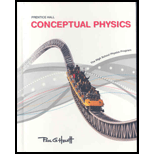
Concept explainers
How is gaseous diffusion used to separate atoms of U-235 and U-238?
The method of separation of U-235 and U-238 by gaseous diffusion.
Explanation of Solution
Introduction:
The gas diffusion is the method of separation of gas from a gas mixture. It is based on the molecular mass of the gasses in the gas mixture. The heavier the molecular mass of the gas less is the speed of the molecule.
The diffusion is the movement of the gas molecules from one position to other position due to the differences in the concentration in the gas molecules. The gas molecules always move from high concentration region to low concentration region.
The atomic mass of U-238 is more than the atomic mass U-235. So, the speed of U-235 molecules is more than the speed of the U-238 molecules. Uranium-235 molecule moves faster than Uranium-238 from high concentration region to low concentration region.
Conclusion:
Thus, Uranium-235 molecule separates from Uranium-238 molecules by gaseous diffusion due to difference in their atomic masses.
Chapter 40 Solutions
Conceptual Physics: The High School Physics Program
Additional Science Textbook Solutions
College Physics: A Strategic Approach (3rd Edition)
Microbiology: An Introduction
Campbell Biology: Concepts & Connections (9th Edition)
Human Anatomy & Physiology (2nd Edition)
Campbell Biology (11th Edition)
Campbell Essential Biology with Physiology (5th Edition)
- Helicobacter pylori (H. pylori) is a helically-shaped bacterium that is usually found in the stomach. It burrows through the gastric mucous lining to establish an infection in the stomach's epithelial cells (see photo). Approximately 90% of the people infected with H. pylori will never experience symptoms. Others may develop peptic ulcers and show symptoms of chronic gastritis. The method of motility of H. pylori is a prokaryotic flagellum attached to the back of the bacterium that rigidly rotates like a propeller on a ship. The flagellum is composed of proteins and is approximately 40.0 nm in diameter and can reach rotation speeds as high as 1.50 x 103 rpm. If the speed of the bacterium is 10.0 μm/s, how far has it moved in the time it takes the flagellum to rotate through an angular displacement of 5.00 * 10² rad? Zina Deretsky, National Science Foundation/Flickr H. PYLORI CROSSING MUCUS LAYER OF STOMACH H.pylori Gastric Epithelial mucin cells gel Number i 318 Units um H.pylori…arrow_forwardT1. Calculate what is the received frequency when the car drives away from the radar antenna at a speed v of a) 1 m/s ( = 3.6 km/h), b) 10 m/s ( = 36 km/h), c) 30 m /s ( = 108 km/h) . The radar transmission frequency f is 24.125 GHz = 24.125*10^9 Hz, about 24 GHz. Speed of light 2.998 *10^8 m/s.arrow_forwardNo Chatgpt please will upvotearrow_forward
- No Chatgpt pleasearrow_forwardNo Chatgpt pleasearrow_forward3. A measurement taken from the UW Jacobson Observatory (Latitude: 47.660503°, Longitude: -122.309424°, Altitude: 220.00 feet) when its local sidereal time is 120.00° makes the following observations of a space object (Based on Curtis Problems 5.12 + 5.13): Azimuth: 225.00° Azimuth rate: 2.0000°/s. Elevation: 75.000° Elevation rate: -0.5000°/s Range: 1500.0 km Range rate: -1.0000 km/s a. What are the r & v vectors (the state vector) in geocentric coordinates? (Answer r = [-2503.47 v = [17.298 4885.2 5.920 5577.6] -2.663]) b. Calculate the orbital elements of the satellite. (For your thoughts: what type of object would this be?) (Partial Answer e = 5.5876, 0=-13.74°) Tip: use Curtis algorithms 5.4 and 4.2.arrow_forward
- Consider an isotope with an atomic number of (2(5+4)) and a mass number of (4(5+4)+2). Using the atomic masses given in the attached table, calculate the binding energy per nucleon for this isotope. Give your answer in MeV/nucleon and with 4 significant figures.arrow_forwardA: VR= 2.4 cm (0.1 V/cm) = 0.24 V What do Vector B an C represent and what are their magnitudesarrow_forward4. Consider a cubesat that got deployed below the ISS and achieved a circular orbit of 410 km altitude with an inclination of 51.600°. What is the spacing, in kilometers, between successive ground tracks at the equator: a. Ignoring J2 (Earth's oblateness) effects b. Accounting for J2 effects c. Compare the two results and comment [Partial Answer: 35.7km difference]arrow_forward
 College PhysicsPhysicsISBN:9781305952300Author:Raymond A. Serway, Chris VuillePublisher:Cengage Learning
College PhysicsPhysicsISBN:9781305952300Author:Raymond A. Serway, Chris VuillePublisher:Cengage Learning University Physics (14th Edition)PhysicsISBN:9780133969290Author:Hugh D. Young, Roger A. FreedmanPublisher:PEARSON
University Physics (14th Edition)PhysicsISBN:9780133969290Author:Hugh D. Young, Roger A. FreedmanPublisher:PEARSON Introduction To Quantum MechanicsPhysicsISBN:9781107189638Author:Griffiths, David J., Schroeter, Darrell F.Publisher:Cambridge University Press
Introduction To Quantum MechanicsPhysicsISBN:9781107189638Author:Griffiths, David J., Schroeter, Darrell F.Publisher:Cambridge University Press Physics for Scientists and EngineersPhysicsISBN:9781337553278Author:Raymond A. Serway, John W. JewettPublisher:Cengage Learning
Physics for Scientists and EngineersPhysicsISBN:9781337553278Author:Raymond A. Serway, John W. JewettPublisher:Cengage Learning Lecture- Tutorials for Introductory AstronomyPhysicsISBN:9780321820464Author:Edward E. Prather, Tim P. Slater, Jeff P. Adams, Gina BrissendenPublisher:Addison-Wesley
Lecture- Tutorials for Introductory AstronomyPhysicsISBN:9780321820464Author:Edward E. Prather, Tim P. Slater, Jeff P. Adams, Gina BrissendenPublisher:Addison-Wesley College Physics: A Strategic Approach (4th Editio...PhysicsISBN:9780134609034Author:Randall D. Knight (Professor Emeritus), Brian Jones, Stuart FieldPublisher:PEARSON
College Physics: A Strategic Approach (4th Editio...PhysicsISBN:9780134609034Author:Randall D. Knight (Professor Emeritus), Brian Jones, Stuart FieldPublisher:PEARSON





